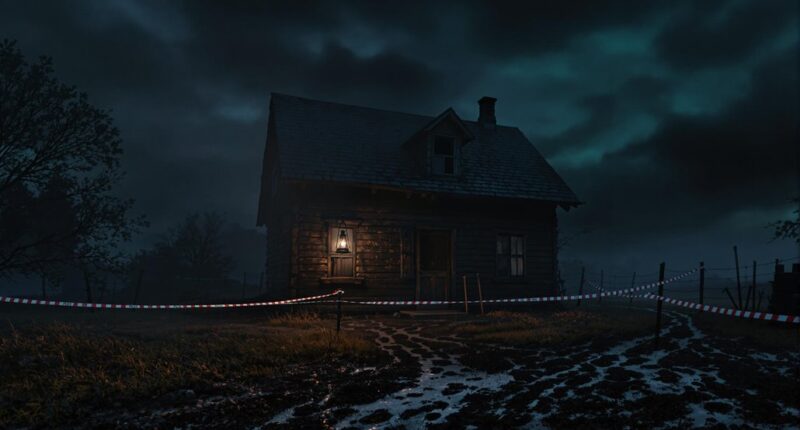The brutal murder of six family members at the isolated Hinterkaifeck farm in 1922 has terrified the Bavarian town of Waidhofen. Police are baffled as evidence suggests the killer stayed on the property for days after the attacks. Strange footprints in snow and mysterious attic noises were reported before the killings. Despite extensive interviews, investigators haven’t identified a motive. The grisly case continues to haunt Germany nearly a century later.
While quiet rural areas seldom see violent crime, the remote farmstead of Hinterkaifeck became the site of one of Germany’s most baffling murder cases. On March 31, 1922, a brutal attack shocked the small Bavarian community near Waidhofen, leaving six people dead and authorities struggling to find answers.
The victims included 63-year-old Andreas Gruber and his wife Cäzilia, who lived on the isolated farm. Police arrived at the scene after neighbors reported not seeing the family for several days. What they discovered was a crime scene that would puzzle investigators for generations to come.
Days before the murders, Andreas Gruber had mentioned strange occurrences around the farm. He told neighbors he’d noticed footprints in the snow leading from the forest to the farm, but none going back. He also reported hearing footsteps in the attic and finding an unfamiliar newspaper on the property. These details later became vital clues in the investigation.
A premonition ignored—footprints approaching but never leaving, mysterious attic steps, and an unknown newspaper foreshadowed the family’s fate.
The killer’s method was particularly disturbing. Evidence suggested the murderer may have stayed at the farm for several days after the killings. Food had been eaten, and the cattle had been fed. This unusual behavior left investigators wondering about the killer’s motives and mental state.
Local police interviewed numerous suspects in the following weeks, including neighbors, former workers, and even relatives. Despite their efforts, they couldn’t establish a clear motive for the crime. Was it robbery, revenge, or something more sinister? The remoteness of the farm made gathering evidence particularly challenging.
The case captured public attention throughout Germany. Newspapers ran daily updates about the investigation, and citizens followed every development closely. The brutal nature of the killings in such a peaceful area left many feeling unsafe in their homes.
The investigation faced significant challenges from the start. Forensic techniques were limited in 1922, and vital evidence was likely overlooked or mishandled. Police had few tools to analyze fingerprints, blood samples, or other physical evidence that might have identified the killer.
The mystery intrigues visitors to this day, with Bremen’s popular “Dark Side” thematic tours highlighting similar historical crimes and their lasting impact on German communities.
Nearly a century later, the Hinterkaifeck murders remain unsolved. The case has become a famous example of a perfect crime—one where the perpetrator escaped justice despite the shocking nature of their actions. Criminal investigators still study the case today, hoping modern techniques might shed new light on this dark chapter in German history.
The mystery continues to haunt the region, serving as a reminder of how even the most peaceful communities can suddenly face unimaginable violence. The victims were murdered with a mattock farm tool, with their bodies later discovered stacked in the barn. For residents of the area, the unanswered questions remain as disturbing today as they were in 1922.
Conclusion
Police haven’t identified any suspects yet, but they’re expanding the search beyond town limits. Residents remain on high alert, with many staying indoors after dark. Officials urge anyone with information to come forward immediately. “We won’t rest until this person is caught,” said Chief Inspector Weber. The investigation continues as the community mourns the victims and hopes for a swift resolution.








